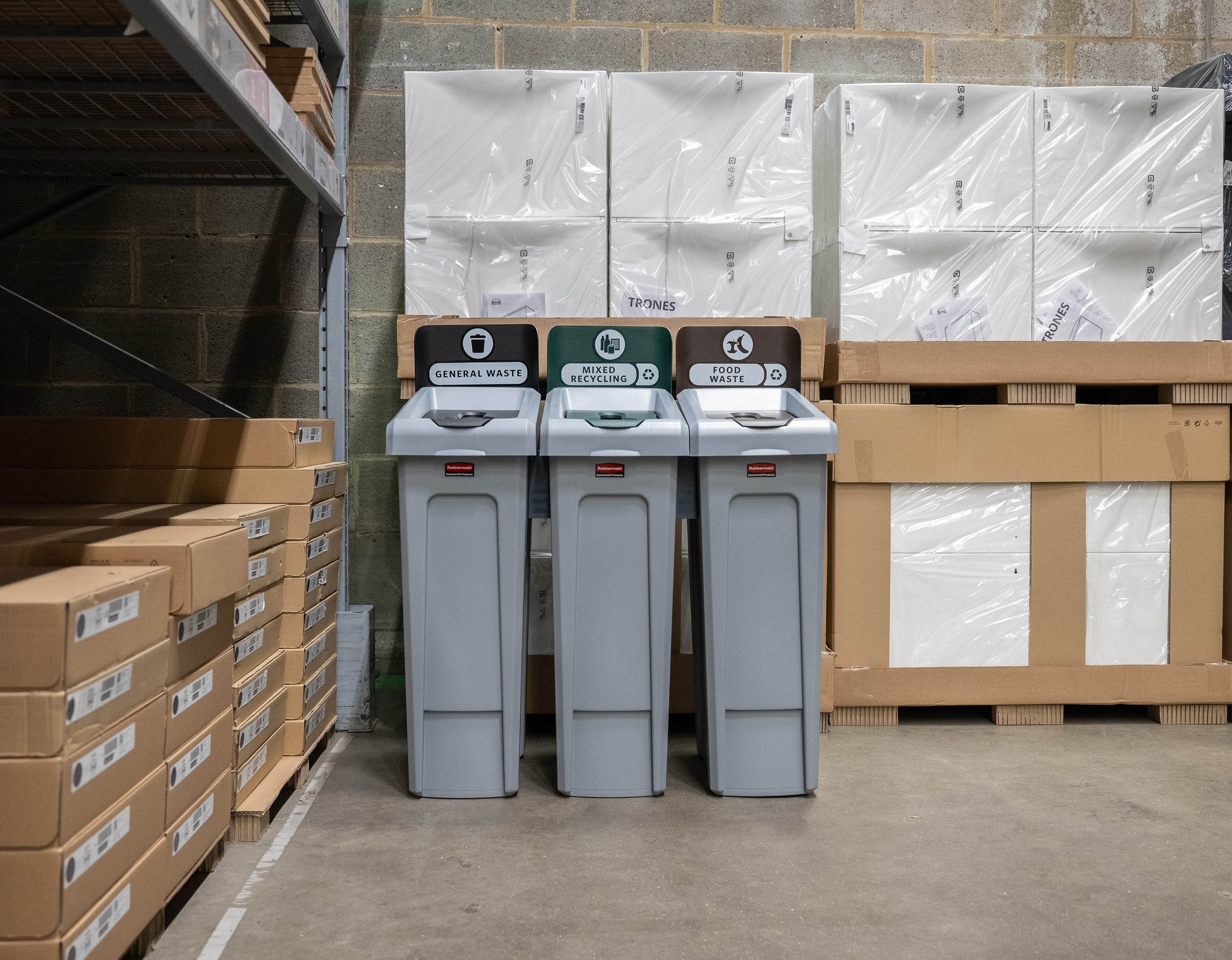
Whether you’re in warehousing, manufacturing or logistics, there’s always waste that needs to be considered. Packaging, rubble, damaged goods... it all needs handling. But how often do you think about the personal waste produced in your workplace?
From break rooms to bathrooms, the hidden cost of personal waste could be making a big impact on your business’s finances.
Personal vs. production waste
So, what do we actually mean when we say personal waste? In short, it’s anything produced by employees, customers or visitors, rather than waste created by standard business operations, such as cardboard packaging in a fulfilment warehouse.
Staff areas and communal spaces like break rooms and bathrooms are the main places this waste is created. Everything from food packaging, water bottles and drinks cans to coffee cups, tea bags and even food itself needs to be taken into account when building your waste management strategy.
What’s the financial impact?
If recycling isn’t separated properly, you could be driving up costs in the long term, or even face legal penalties. Recent commercial recycling legislation changes in England and Wales mean that businesses must separate recyclable waste internally on site prior to collection by a waste contractor. This includes small-scale personal waste as well as larger amounts being produced from main business operations.
Although being brought on site in small quantities, the volume of personal waste soon adds up, especially with large numbers of people on site. With general waste costing more to dispose of than recyclable waste, making sure you’re recycling as much as possible is better for business – especially when you consider the risk of fines for non-compliance with legislation. In fact, logistics and manufacturing businesses using our Love Recycling audit tool have been shown to save a potential 31% on waste collection costs, on average, with better recycling*.
How do you know what waste is being produced?
The best way to get a handle on the types of waste being produced throughout your facility is to do a ‘waste walk’. This means walking through every part of your premises and recording where waste is being produced, and what type it is (eg. paper, glass, cardboard, plastic bottles, food waste). Anywhere waste is produced, it needs to be collected.
At DPD, the team got their recycling rate up to 90% when they implemented multi-stream recycling following a waste walk at their facilities.
Download your own waste walk checklist here and start making savings at your business.
*Source: Average potential cost saving using Love Recycling Audit Tool
Share on Social Media